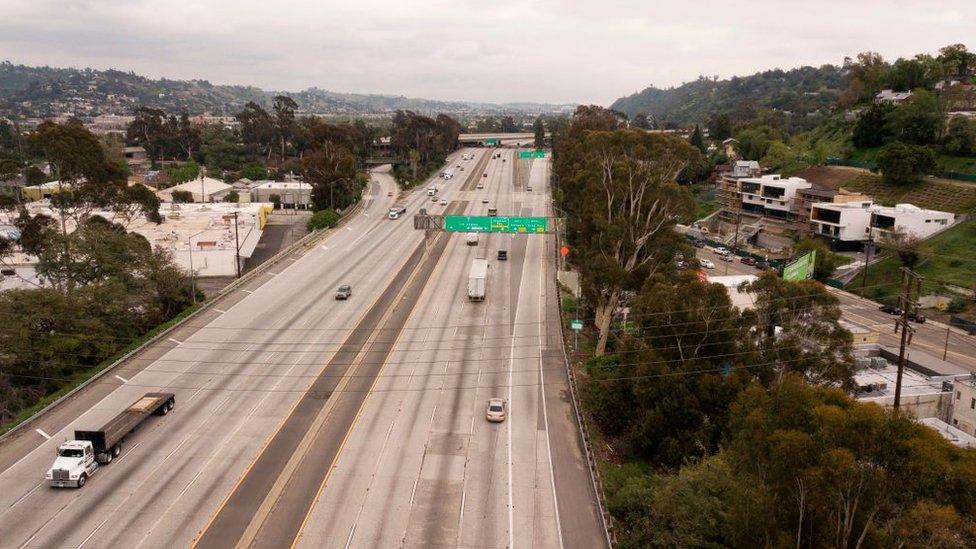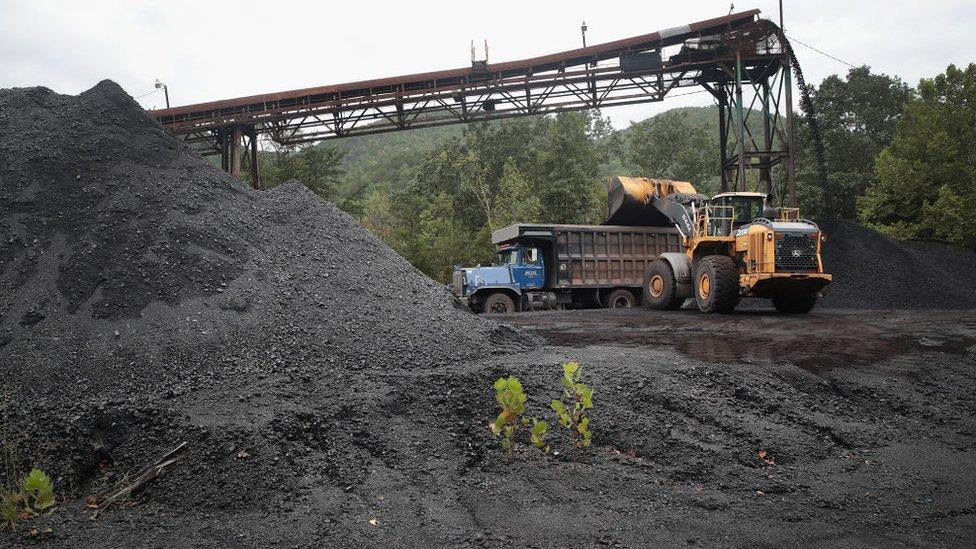Climate change: US emissions in 2020 in biggest fall since WWII
- Published

Airplanes parked at a US airport as states banned non-essential travel
US greenhouse gas emissions tumbled below their 1990 level for the first-time last year as a result of the response to the coronavirus pandemic.
A preliminary assessment, external from research group Rhodium says that overall emissions were down over 10%, the largest fall since World War II.
Transport suffered the biggest decline, with emissions down almost 15% over 2019.
Energy emissions also fell sharply, due to a decline in the use of coal.
The widespread impact of Covid-19 on the US saw over 20 million people infected with the virus, and to date more than 350,000 have died as a result.
With stay-at-home orders in place, economic activity ground to a halt in March and April and this had significant implications for greenhouse gas emissions.

Empty freeways as car journeys declined rapidly in March and April last year
In transport, the restrictions on international travel and non-essential journeys saw demand for fuel fall sharply.
At the peak of restrictions demand for jet fuel was down 68% on 2019, with petrol down 40%.
They have both bounced back as travel bans were eased later in the year but jet fuel demand was still 35% down in December compared to the previous year.
When it comes to electricity though the picture is more complicated.
Overall the demand for electricity was down just 2% but emissions fell by over 10%.
"This was driven almost exclusively from the continued rapid decline of coal-fired power generation," the report says.
After decades of dominance, coal in 2020 was the third largest source of power, behind natural gas and nuclear.

The US coal industry declined during 2020 despite political support from the White House
Renewables now supply 18% of power, the report says, just behind coal with 20% of the market.
Based on the preliminary set of data for the year, the authors estimate that overall US emissions fell below 1990 levels for the first time in three decades.
The overall fall of 10.3% essentially dwarves the impact of the great economic recession of 2009 on the US, when emissions were down 6.3%.
In global climate negotiations, the US uses 2005 as its benchmark year.
Compared to 2005 levels, emissions in 2020 were 21.5% down, exceeding the target the US set for itself under the Copenhagen Accord of 2009.
Under the Paris Agreement, the US has promised to cut emissions by 26-28% below the 2005 mark, but the authors of the Rhodium report caution against thinking that the country is now on track to reach this target.
Last year "certainly shouldn't be considered a down payment towards meeting the US target under the Paris Agreement," the report says.
"The enormous toll of economic damage and human suffering as a result of the pandemic is no cause for celebration."
Economic growth is expected to reach 3-4% of GDP in 2021 and greenhouse gas emissions will likely increase as well.
Follow Matt on Twitter., external